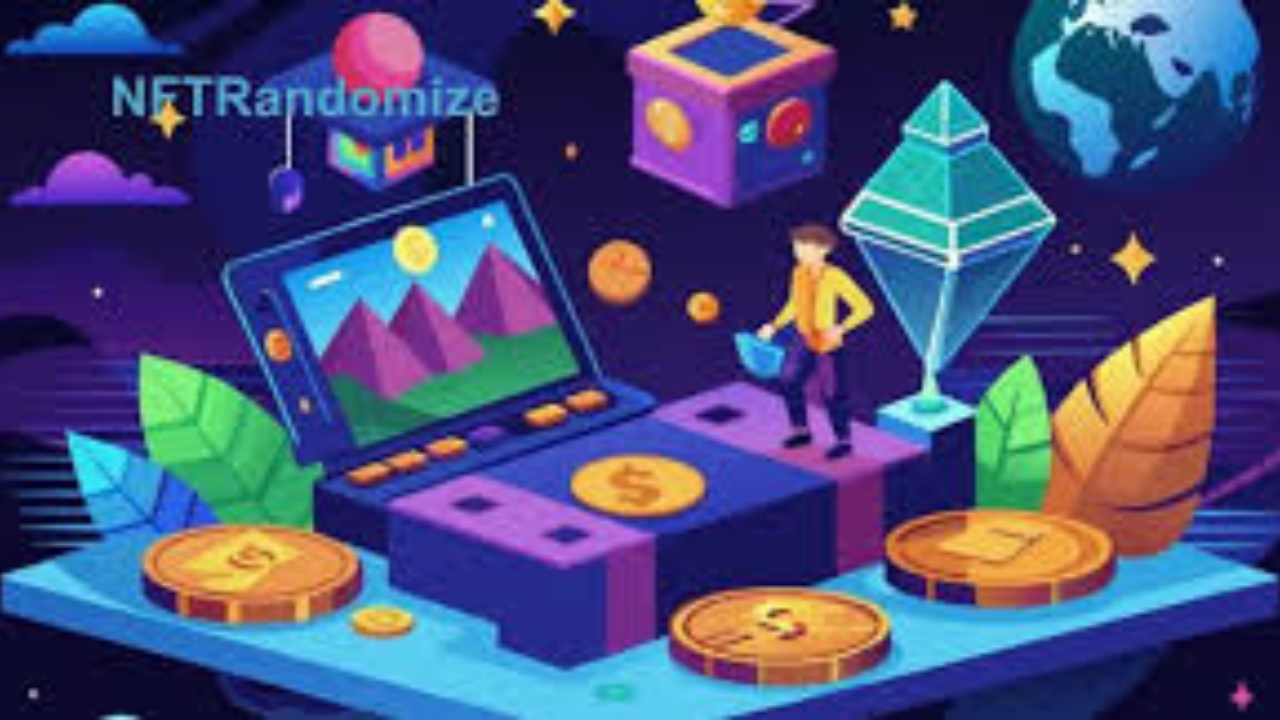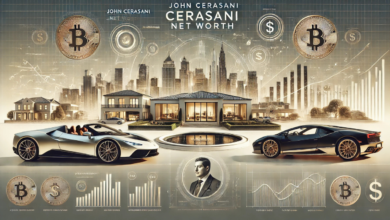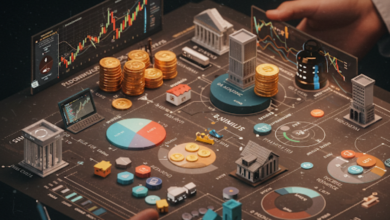The world of non-fungible tokens (NFTs) has been expanding at an exponential rate. From digital art to collectables, NFTs have revolutionized how we think about ownership, creativity, and scarcity in the digital age. Among the various innovations in this space, NFTRandomize has emerged as a game-changing tool, offering a fresh perspective on NFT creation by introducing randomization into the process. In this article, we will explore the concept of NFTRandomize, its impact on the NFT space, and why it is poised to shape the future of NFT creation.
What is NFTRandomize?

NFTRandomize is a tool or algorithm designed to apply randomness to the process of creating non-fungible tokens (NFTs). By introducing a randomized element, NFTRandomize ensures that each NFT created within a collection is unique, even when the same base assets are used. This technology is a breakthrough for creators, as it enables them to generate large quantities of NFTs with various combinations of traits, characteristics, and features.
NFT collections that are randomized can feature different combinations of colors, patterns, accessories, facial expressions, or backgrounds. For example, an artist creating an NFT series of digital avatars can use NFTRandomize to mix and match traits, producing thousands of potential variations from a limited set of assets. The result is a collection that offers diversity and surprises while maintaining a coherent theme.
How Does NFTRandomize Work?
At the core of NFTRandomize lies the concept of randomness and algorithms. The process typically begins with a set of assets or “layers,” such as backgrounds, faces, clothing, or other visual elements. These layers are carefully crafted and categorized according to specific traits (e.g., hair colour, eye shape, or clothing type). When an NFT is generated using NFTRandomize, the algorithm randomly selects one element from each layer to combine and create a final product.
The randomness can be adjusted by setting weights for each layer. For instance, some traits might be rarer than others, and the algorithm can be programmed to reflect that by increasing or decreasing the probability of selecting certain features. This allows creators to control the rarity of specific traits, making them more desirable to collectors. For example, a rare golden outfit could appear only in 1% of NFTs, while a more common blue outfit might appear in 30% of the generated NFTs.
Additionally, NFTRandomize can apply other randomization techniques such as changing the order in which traits are combined, ensuring that even if the same set of traits is used, the combinations will still be unique. This randomness not only enhances the creativity of the process but also creates excitement among buyers, who are eager to see what unique combination they will own.
Why is NFTRandomize Important for NFTs?
The integration of randomness through NFTRandomize is crucial for several reasons. Here are some of the key factors that make it a game-changer for the NFT space:
1. Increased Rarity and Scarcity
In the NFT world, rarity is a fundamental aspect that contributes to the value of a token. Limited-edition assets are more desirable because they are harder to obtain, which drives up demand. By incorporating randomization into NFT creation, creators can produce assets with varying levels of rarity, from ultra-rare traits to common features. This scarcity aspect fuels the excitement around collecting NFTs, as buyers hunt for the rarest combinations.
2. Enhanced Creativity and Variety
Traditional methods of NFT creation can lead to repetitive or overly predictable designs, especially when dealing with large collections. NFTRandomize removes this limitation by introducing a high degree of variation, allowing for thousands (or even millions) of potential unique NFTs. This randomness empowers creators to experiment with different combinations of assets and traits, unlocking new possibilities for artistic expression and creativity.
3. Fairer Distribution of NFTs
Randomized creation ensures that no two NFTs are the same. In the past, some collectors might have had an unfair advantage in acquiring NFTs with the most desirable traits. However, by using NFTRandomize, the process becomes more transparent and equitable, as everyone gets an equal opportunity to own rare or unique combinations, regardless of when they purchase or mint an NFT.
4. Improved Collectible Value
For collectors, randomness adds an extra layer of excitement to NFT drops. Each new release can feel like a lottery or a treasure hunt, where buyers don’t know exactly what they’ll get, but they know there is a chance of acquiring something valuable. The element of surprise makes NFTs more appealing and collectable, leading to a stronger market presence.
5. Automated NFT Creation
The process of manually designing each NFT in a large collection can be extremely time-consuming. NFTRandomize automates this aspect, allowing creators to generate large numbers of NFTs with minimal effort. By simply providing the necessary assets and configuring the randomization rules, artists can produce collections of thousands of unique NFTs in a fraction of the time it would take to create each one individually.
NFTRandomize in Action: Examples from the NFT Space
Several popular NFT projects have already incorporated NFTRandomize or similar randomization algorithms into their creation process. One example is the Bored Ape Yacht Club (BAYC), a popular collection of hand-drawn avatars featuring various traits like clothing, hats, and facial expressions. Each ape in the collection is randomly generated, giving rise to thousands of unique designs, making the collection a favourite among NFT enthusiasts and collectors.
Another example is the World of Women (WoW) NFT collection, which focuses on celebrating women in the NFT space. WoW employs a randomized approach to design, allowing the team to create a diverse range of female avatars, each with distinct characteristics and outfits. The randomization ensures that no two women in the collection are identical, which adds to the collectible value of the project.
These examples illustrate how NFTRandomize can be used to create successful NFT collections that combine artistry, rarity, and community-building in a way that traditional methods of creation may not.
The Future of NFTRandomize and NFTs
As the NFT space continues to evolve, it is clear that NFTRandomize will play an increasingly important role in shaping its future. The ability to generate large-scale NFT collections with unique combinations of traits, combined with the potential for greater transparency, fairness, and creativity, ensures that randomization is here to stay.
In the coming years, we can expect to see even more sophisticated and customizable randomization algorithms, giving creators greater control over how rarity is distributed and how traits are combined. Additionally, NFTRandomize could be further integrated into various NFT marketplaces, allowing collectors to filter and search for specific traits or combinations that they desire.
The growing popularity of NFT gaming, virtual worlds, and digital collectables also opens up new avenues for NFTRandomize to explore. By incorporating randomization into in-game assets, characters, and avatars, developers can create truly unique virtual experiences that engage players and collectors alike.
Conclusion
NFTRandomize represents a significant leap forward in the world of NFT creation. By introducing randomness into the design process, it unlocks new possibilities for artists, collectors, and developers alike. The resulting diversity and rarity of NFTs create exciting opportunities for both creators and buyers, ensuring that the NFT space remains dynamic and full of potential. As more projects embrace this innovative tool, we can look forward to a future where the creation and collection of NFTs are more varied, accessible, and engaging than ever before.
FAQs About NFTRandomize
1. What is NFTRandomize and how does it work?
NFTRandomize is an algorithm that uses randomization to create unique NFTs from a predefined set of traits or assets. By randomly combining different features such as backgrounds, accessories, or facial expressions, it ensures that each NFT in a collection is distinct. It can also adjust the rarity of traits based on weights, allowing for a balance of common and rare assets.
2. Why is NFTRandomize important for NFT creators?
NFTRandomize simplifies the process of creating large collections of NFTs by automating the generation of unique combinations. It also adds a layer of randomness and rarity, which enhances the value and appeal of the NFTs. This tool allows artists to focus more on creativity while leaving the complex task of randomizing to the algorithm.
3. How does NFTRandomize contribute to the value of NFTs?
By introducing randomness and rarity, NFTRandomize increases the collectable value of NFTs. Some traits may be rarer than others, making them more desirable to collectors. The element of surprise also enhances the excitement surrounding NFT drops, as buyers do not know exactly what combination they will receive.
4. Can NFTRandomize be used in NFT games or virtual worlds?
Yes, NFTRandomize can be applied to NFT gaming and virtual worlds to create unique in-game assets, characters, and avatars. This allows for a more dynamic and engaging player experience, where each asset or character is one-of-a-kind and can be customized according to the player’s preferences.
5. What are the benefits of using NFTRandomize for collectors?
For collectors, NFTRandomize offers the chance to own rare and unique NFTs. The randomness of the creation process ensures that no two NFTs are the same, which makes collecting even more exciting. Additionally, it gives collectors an equal opportunity to acquire valuable assets, regardless of when they purchase or mint their NFTs.
You May Also Read: https://buznews.org/sunshine-grocers/




